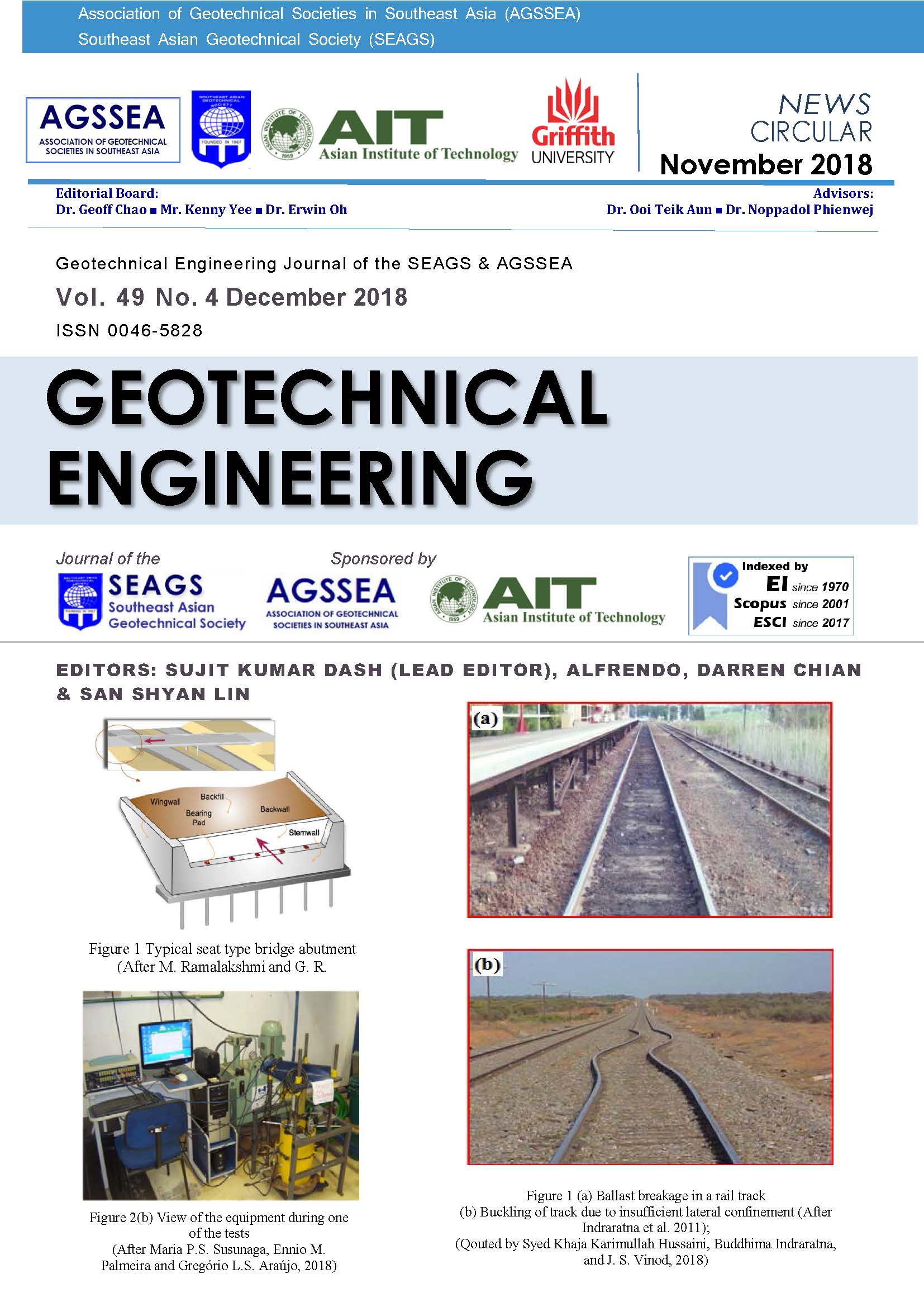A Critical Review of the Performance of Geosynthetic-Reinforced Railroad Ballast
Main Article Content
Abstract
In the recent times, railway organizations across the world have resorted to the use of geosynthetics as a low-cost solution to stabilize ballast. In this view, extensive studies have been conducted worldwide to assess the performance of geosynthetic-reinforced ballast under various loading conditions. This paper evaluates the various benefits the rail industry could attain because of the geosynthetic reinforcement. A review of literature reveals that geogrid arrests the lateral spreading of ballast, reduces the extent of permanent vertical settlement and minimizes the particle breakage. The geogrid was also found to reduce the extent of volumetric compressions in ballast. The overall performance improvement due to geogrid was observed to be a function of the interface efficiency factor (α). Moreover, studies also established the additional role of geogrids in reducing the differential track settlements and diminishing the stresses at the subgrade level. The geosynthetics were found to be more beneficial in case of tracks resting on soft subgrades. Furthermore, the benefits of geosynthetics in stabilizing ballast were found to be significantly higher when placed within the ballast. The optimum placement location of geosynthetics has been reported by several researchers to be about 200-250 mm below the sleeper soffit for a conventional ballast depth of 300-350 mm. A number of field investigations and track rehabilitation schemes also confirmed the role of geosynthetics/geogrids in stabilizing the tracks thereby helping in removing the stringent speed restrictions that were imposed earlier, and enhancing the time interval between maintenance operations.
Article Details

This work is licensed under a Creative Commons Attribution-NonCommercial-NoDerivatives 4.0 International License.
Copyright © 2019 Association of Geotechnical Societies in Southeast Asia (AGSSEA) - Southeast Asian Geotechnical Society (SEAGS).


